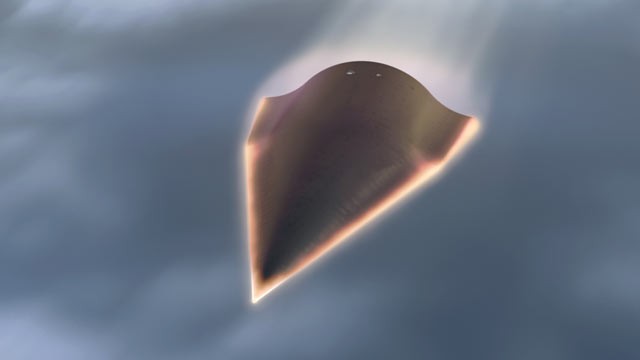
The drone was designed to reach Mach 20 -- or 20 times the speed of sound -- and could travel between Los Angeles and New York in just 12 minutes. Such high speeds could be useful for new weapons, among other things.
The HTV-2 was launched on a Minotaur IV rocket from Vandenberg Air Force Base near Lompoc, Calif. DARPA, the Defense Advanced Research Projects Agency, first reported that the HTV-2 was on course and sending data. But 20 minutes later it sent a message saying it had lost contact with the vehicle.
Another 45 minutes passed. "Downrange assets did not reacquire tracking or telemetry," said DARPA on its Twitter feed. "HTV2 has an autonomous flight termination capability," it said -- shorthand for saying it was designed to ditch itself in the ocean if there was a danger it had flown out of control.
This afternoon DARPA released a statement saying it had difficulty controlling the Falcon in the air.
"The aircraft transitioned to Mach 20 aerodynamic flight," it said. "This transition represents a critical knowledge and control point in maneuvering atmospheric hypersonic flight. More than nine minutes of data was collected before an anomaly caused loss of signal.
Follow along with the flight HERE (http://twitter.com/#!/DARPA_News) on Twitter.
An earlier version of the hypersonic craft made a flight back in April 2010, but it also lost contact about nine minutes into flight. Today's flight was meant to build on the knowledge from that experiment and add to the technical understanding of hypersonic flight, DARPA said.
The Defense Department is trying to develop technology to respond to threats around the globe at speeds of Mach 20 or greater. A warhead flying through the atmosphere might be harder to intercept than one carried into space by a missile.
Building a hypersonic aircraft is considerably different from a spacecraft, even though a ship in orbit travels faster -- 17,500 mph on average at altitudes of a hundred miles or more. Hypersonic planes need to cut through the atmosphere, and the dynamics of how to do that have proved surprisingly difficult.
"Assumptions about Mach 20 hypersonic flight were made from physics-based computational models and simulations, wind tunnel testing, and data collected from HTV-2's first test flight — the first real data available in this flight regime at Mach 20," said Schulz in a statement before today's launch. "It's time to conduct another flight test to validate our assumptions and gain further insight into extremely high Mach regimes that we cannot fully replicate on the ground."
The military has a long history of setting aviation milestones. Oct. 14, 1947 marked the first time an airplane flew faster than the speed of sound when the Bell X-1 reached 700 miles per hour, Mach 1.06, and in 1959 test flights began for the X-15, which set new speed records when it attained Mach 4, 5 and 6.
But Mach 20 remains a challenge. "As today's flight indicates, high-Mach flight in the atmosphere is virtually uncharted territory," said Maj. Schulz
No comments:
Post a Comment